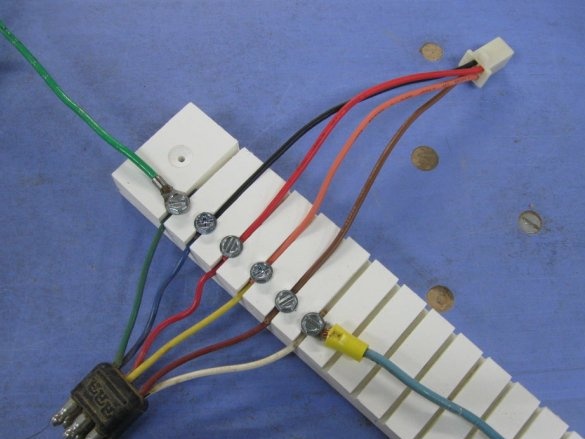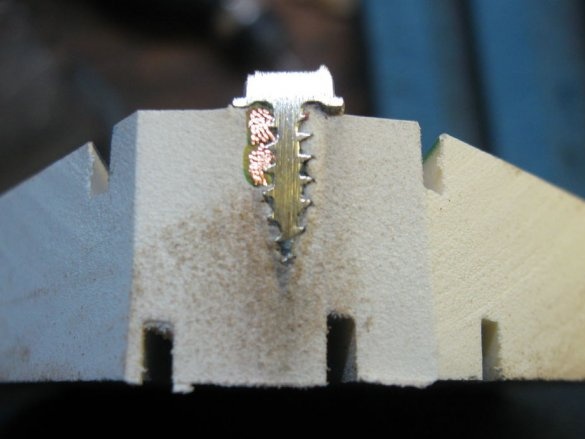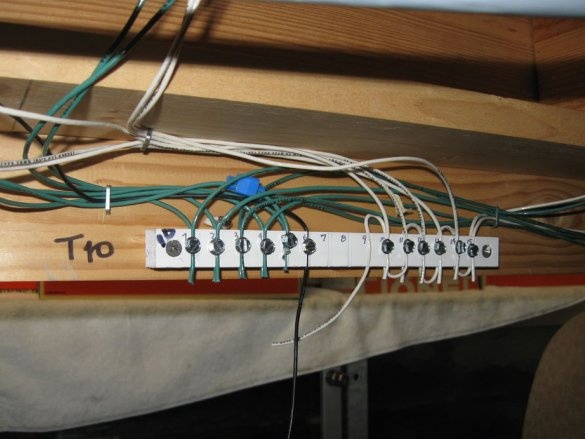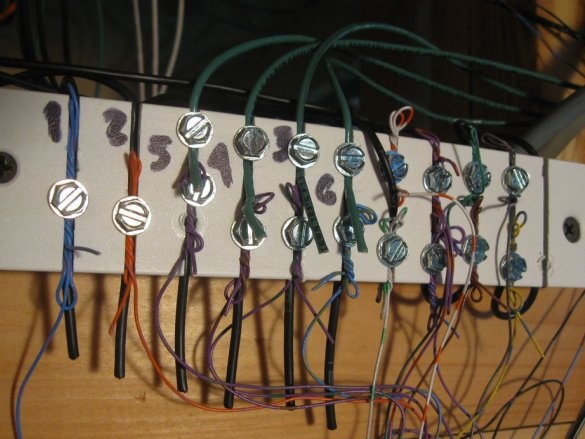A wonderful invention is the terminal block. It is convenient, reliable and inexpensive ... until it starts to take a lot of them, it is then that it becomes clear how "inexpensive" it is. The author of Instructables under the nickname carl5blum came up with a variant of a home-made terminal block. This design relates to insulation displacement connectors: before clamping the conductor into such a terminal strip, it does not need to be crimped or even stripped.
To explain the principle of operation of such a terminal block, the master sawed one of them along the grinder:
One illustration says more than a thousand words. It’s also clear why homemade suitable only for logic and signal circuits. In the power terminal block, steel hardware serves only to create mechanical force, while the current-carrying part, often tinned, is made of non-ferrous alloy. Here, the current passes through a steel self-tapping screw, and the resistivity of the steel is greater. Although the developer tested his terminal blocks at currents up to 11 A, and he himself uses them in railway models at currents of the order of 1 A, their use in power circuits cannot be recommended.
The terminal block is based on a block of PVC measuring 1x4x4 inches, the photo shows the packaging of one of them, so that it is clear what to focus on:
In it, the master cuts the transverse grooves a quarter of an inch deep, in this case the terminal strip will be designed for self-tapping screws half an inch long:
To clamp two wires in the terminal block, you need to put them in the groove and screw the screw. You can also add a third one from above, but you will have to clean it and squeeze it with a ring tip (NKI). With the help of two screws in the same groove, you can add more conductors in the middle, then it is better to take a wider bar. Instead of several transverse grooves, you can also make one longitudinal one, extend a conductor in it, and then add as many additional conductors with NKI tips and self-tapping screws in different places as you need. Another feature of such a terminal block is the need to double the conductors of very small sections. After that, they are also held quite reliably.The following are applications for these terminal blocks:







